Visual Sea, Nordhavn 46 hull #64, or N4664
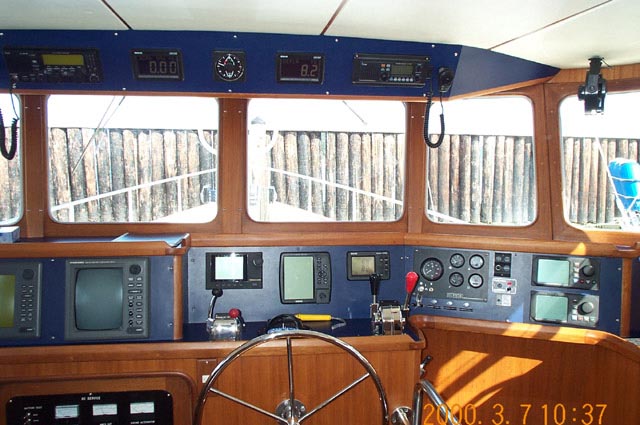
Changes
Nordhavn continues to refine their boats. Here are just a few of the changes that have been made to Visual Sea that are different from previous hulls. Some we suggested, others Nordhavn decided upon. We'll soon know how they work in practice!
- Fiberglass fuel tanks. All previous 46's have had iron tanks. Hull #64 is the first to have form-fitting fiberglass tanks, just like the Nordhavn 62 has. We hope this will increase our fuel capacity to over 1,300 gallons, so we can make one long leg from Cape Town to Tristan da Cunha to Brazil.
- Fiberglass engine room floor. All previous 46's have had wooden floor panels. Hull #64 has fiberglass floor panels, which will be easier to keep clean and should last longer.
- Coastal cruiser galley layout, but with a twist: the main galley space goes athwartships as
in other "coastal cruiser" arrangements, but we have redesigned the dinette table to also parallel the galley and go athwartships rather than in an "L" shape. (Think Seinfeld cafe style!) This gives us a bigger usable space for projects and for the kids to eat and study at. The dinette raises and lowers if needed, but we are not considering using it for additional
sleeping.
- Forward guest stateroom has been deleted. Instead, a bunk room for the children has been built forward, with each side having an upper and a lower berth. The port lower berth is actually a double berth. Each bunk has a cubby space and a personal reading light.
- Deleted the stairway from the galley into the master stateroom and replaced it with a large pantry area in the kitchen and more locker space in the master bedroom.
- Added an extra deep freezer under the starboard settee.
- Hull #64 is the first Nordhavn 46 to have both a flying bridge and a ketch sailing rig. At least six Nordhavn 46s have had sailing rigs before, and some have had a flying bridge, but never before have these two options been combined. With our two masts this gives us a ketch sailing rig with a jib and main on the foremast and a mizzen on the rear mast.
- Hull #64 is the first Nordhavn 46 to have added a crow's nest, like many of the Nordhavn 62s have. It has a ladder up the foremast for climbing up into a nice crow's nest 50' above the sea! At least 4 people have tried it out to date.
Redundant Systems
Navigation
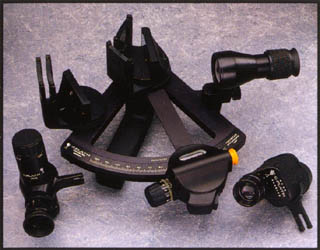
- 2 GPS systems built in, plus 3 additional handheld GPSes as backup (1 in life raft*)
- 1 Sextant (ostensibly for when GPS dies, but really because I love celestial navigation!)
- 3 Depth sounders: 1 is also a fish finder, 1 is also a forward looking sonar
- 2 Radars: 1 Furuno open array 64 mi, 1 Furuno closed array 36 mi
- 2 Autopilots with digital magnetic fluxgate compasses, and 1 backup manual tiller
- 2 Compasses of the traditional variety, 5" in diameter
Calculation
- 2 HP-48G calculators programmed with celestial navigation software
- 1 Compaq iPaq 3630 PocketPC for quick lookup of information
- 1 Apple Macintosh PowerBook G3 with MPW and HyperCard for programming
- 1 Apple iBook SE for DVD viewing, MP3 creation, and email checking
- 1 Dell Latitude CPi for navigation and data logging via NMEA
- 1 Dell Inspiron 4000 for email and web-browsing via cellular phone modem
Communication

- 2 Icom VHF radios
- 1 Raytheon handheld VHF radio
- 1 handheld VHF in life raft*
- 1 Icom M710RT SSB radio
- 1 406 MHz GPIRB
- 1 406 MHz EPIRB in life raft
Power
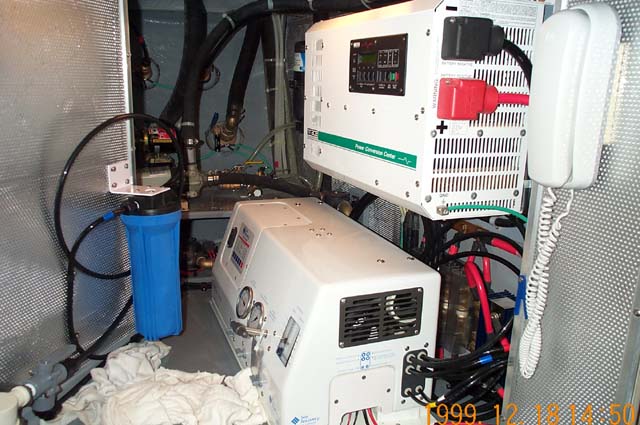
- 3 Sources of electrical power: main engine, wing engine, and generator
- 3 Sources of propulsion: main engine, wing engine, sails*
- 4 Battery banks: main start, wing/generator start, 2 house banks
- 3 Extra craft: 1 11' Avon dingy, 1 8' Avon dingy, 1 life raft
- 3 Bilge pumps: 1 automatic, 1 automatic high capacity, 1 manual
- 3 Sources of water: 300 gallon tanks, 1 170 gallon per day reverse osmosis water maker, 1 hand pumped reverse osmosis water maker in life raft
* To be added soon.
The Visual Sea going back into the water.
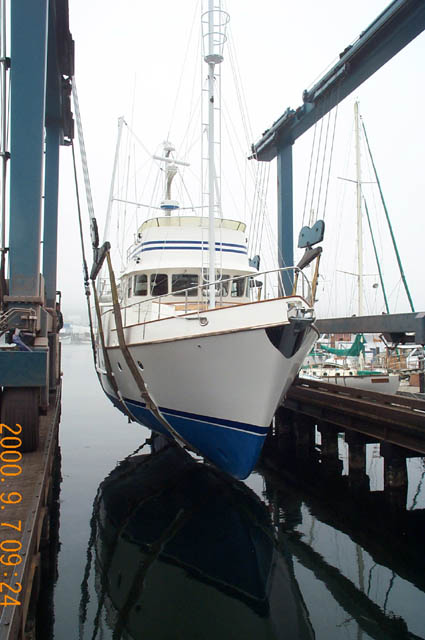
The table in the salon, with curtains by Beverly Brennan.
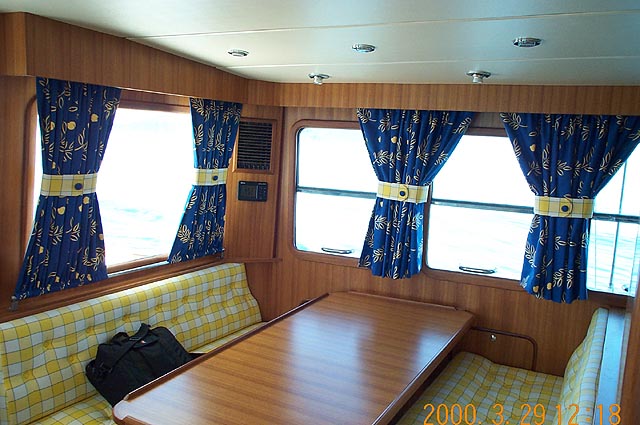
The couch in the salon, with a refrigerator/freezer hidden
underneath, and custom bookshelves just forward of the couch. The pillows
were also done by Beverly Brennan.
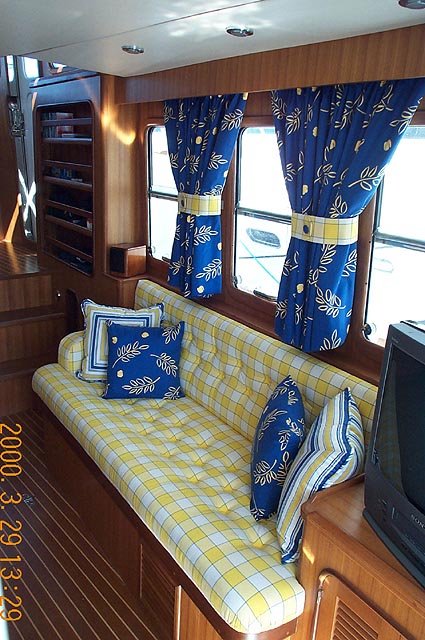
The main table in full swing:
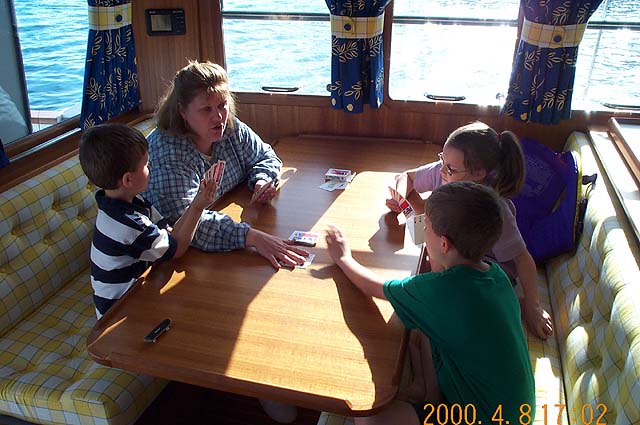
The view from the door into the engine room.
The main engine in seen in the foreground, the generator is in the background
on the left in the large white sound-deadening box, and the backup engine in the back right corner:
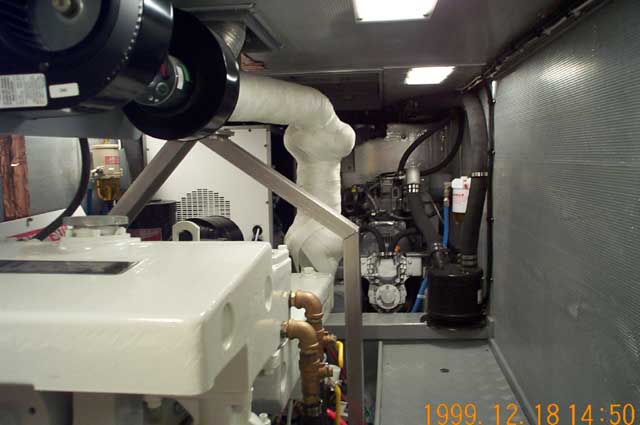
The daunting main electrical panel. To the left from top to bottom are
the backup engine controls, the generator controls, and the AC inverter/charger
controls. At the top of the photo you will see from left to right an intercom / phone,
two radars, a forward-looking sonar, and our Garmin GPS 230.
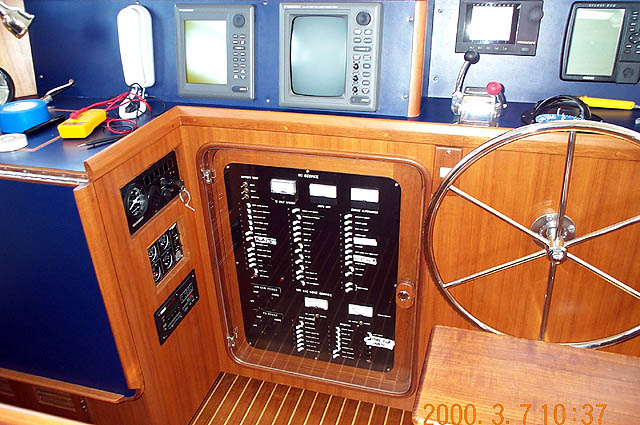
Our two Furuno radars, a 36 mile closed array unit on the left,
and our primary 64 mile open array unit on the right.
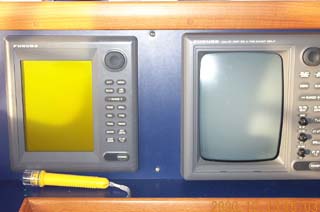
Our Avon 11'2" dinghy with a Honda 4 stroke 9.9 HP outboard motor. It
is shown here being deployed by our deck winches:
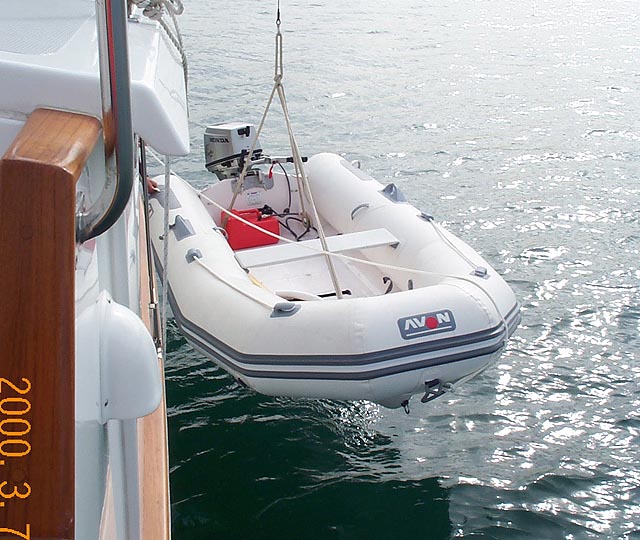
A view of the Paravane system deployed, which reduce ship rolling by
using two metal "fish" that look like a cross between an anchor and a boomerang,
one hung under each boom. These fish glide underwater about 10 feet deep.
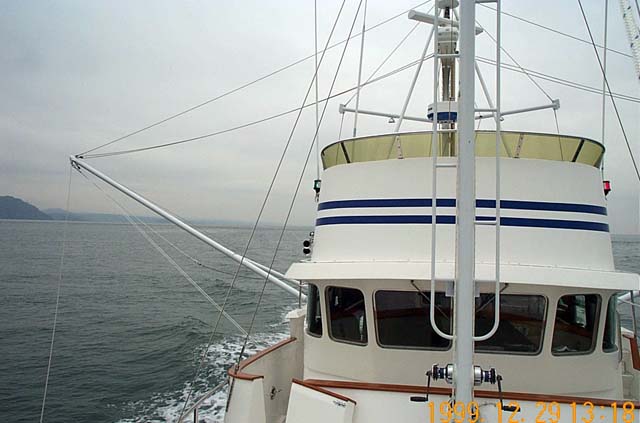
A view from the crow's nest looking down upon the rear deck area. One can
see the open array radar antenna, the round closed array radar antenna, the dinghy in
its storage location, and the controls of the upper helm on the flying bridge.
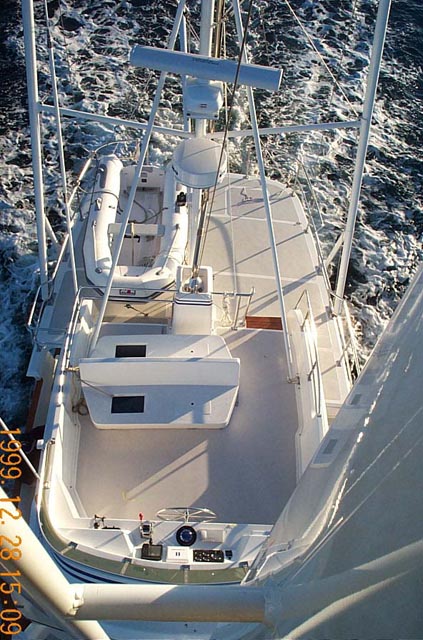
The Captain and Crew in their custom made matching sweatshirts, made by
Dannette Tobin of Massachusetts, and in their custom made caps made by Mike Holm of Washington:
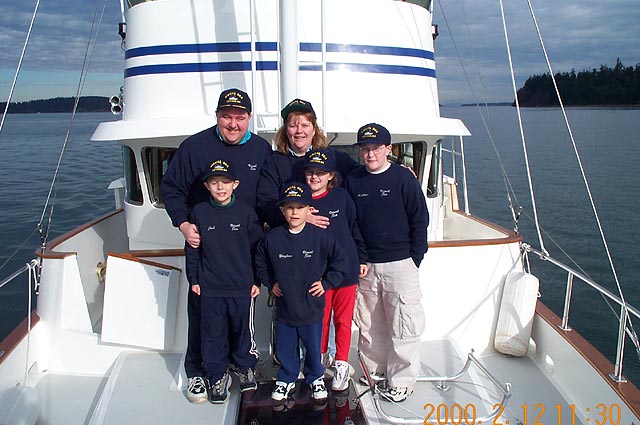
Go to the main Ship page, or back to Dan's home page.
Created: 10 Dec 1999
Modified: 8 Sep 2000















